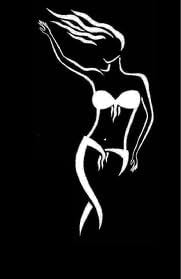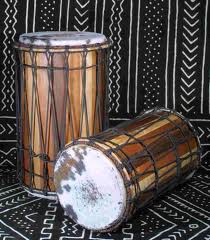 For thousands of years dance has played an integral role in ritual and religion. For many, it was story telling and theater that led to the formation of their ritualized services. Eventually the origin stories themselves may fade but the dances, emotion, and resonance remain. For African Americans, many of whom have very little links to our ancestral pasts, our own dances and rituals have often been scandalized, sexualized, or out right vilified as unfit for public consumption.
For thousands of years dance has played an integral role in ritual and religion. For many, it was story telling and theater that led to the formation of their ritualized services. Eventually the origin stories themselves may fade but the dances, emotion, and resonance remain. For African Americans, many of whom have very little links to our ancestral pasts, our own dances and rituals have often been scandalized, sexualized, or out right vilified as unfit for public consumption.
Search You Tube for African dances and you will see a variety of styles from the highly stylized ecstasies of the Yankadi to the lesser known dances of the Xhosa and Woodaabe; each movement represents a concept or theme. Boasting, welcome, coming of age, fertility, or plain “I want to have fun.” can be communicated through the wave of an arm or a steady hip bump to the sound of beating drums.
Even before becoming a follower of Dionysos I loved to dance. Growing up in the south, I learned square dancing in middle school and the compulsory arms-length-away dancing of high school prom. As I entered the pagan community I discovered new dances, most of which involved skipping in circles or some other form of dance accepted by the gentry of Europe’s past and passed along to their children.
It wasn’t until I discovered African, Indian, and Middle Eastern styles of dance that I finally felt “free.” A body of curves, strength, and energy were ignited by the pulsing drums, hypnotic chants, and shouts of joy emanating from the throats of women who looked like me. Dance went from a portion of ritual, to being ritual itself and once my hips became involved there was no stopping me.
See, despite being fit, I have hips. Hips made for bearing children, and bumping doors closed, and swiveling in a fitted pair of jeans. In my opinion, my hips are made for dancing, for scooping out the best part of a beat and accentuating it with my femininity. Historically within Western culture, the bodies of women of color and especially black women are viewed as naturally lewd or made for the sole purpose of sex. By the time you combine these stigmas with the festive dances of some cultures where the hips, stomach, and buttocks are put to motion, it’s no wonder a dance of beauty, creativity, or fiery worship to one individual can become another person’s“trash.”
Sadly, some African Americans have completely forgotten just how powerful and wonderful our dances are. This isn’t to say that all black pagans should practice some form of ethnic dance, but I wonder why more of us aren’t bringing our rhythms, and our hips, to the community. I wonder if this is part of our fear that we will be seen as “hood rats” or worse for daring to shimmy and praise the gods to the beat of drums that are our own. Perhaps I’m generalizing too much. Instead of asking this of all black pagans I say this for fellow dancers for, and to, the gods.
Each movement can be devotion, acceptance, and a shedding of the stigmas against out bodies so many of us have, subconsciously, internalized. Dancing with our hips, to the drums that drive us, to the shouts we’ve long forgotten is a way of showing the gods that not only have we opened ourselves to our brothers and sisters within the pagan community but that we’ve also worked to accept ourselves in our entirety.
Perhaps we will see some kind of change soon enough. Belly dance has become an acceptable form of dance for women of all races and is welcomed in most pagan settings. As more women, and especially black women, embrace Bhangra, Raqs Baladi, and Nmane we can not only learn about new cultures and share this experience with others, but we can also gain acceptance and love for our own hips, lips, and fingertips in the many shapes and forms they take.
|
“These hips are big hips. they need space to move around in. they don’t fit into little petty places. these hips are free hips. they don’t like to be held back. these hips have never been enslaved, they go where they want to go they do what they want to do. these hips are mighty hips. these hips are magic hips. i have known them to put a spell on a man and spin him like a top “ Lucille Clifton (1936-2010) |
 K. Pythia Theocritos has been a practicing pagan, both in and out of the community, for 11 years. She is currently a devotee of The Olympians, editor of He Epistole; A Hellenic Polytheist Newsletter, and proud purveyor of self-deprecating humor. Having studied eclectic Wiccan-influenced magical practices, she seeks to construct, for herself, a ceremonial magic system based on Greco-Roman symbolism instead of the, typical, Judeo-Christian archetypes. This project, combined with her studies in alchemy, have forced her to convert her blood into pure caffeine for efficiency. She is engaged in a wonderfully playful inter-faith marriage; is the personal butler of 4 cats, and is fond of a good drink, a few laughs, and profanity when it fits the surrounding company.
K. Pythia Theocritos has been a practicing pagan, both in and out of the community, for 11 years. She is currently a devotee of The Olympians, editor of He Epistole; A Hellenic Polytheist Newsletter, and proud purveyor of self-deprecating humor. Having studied eclectic Wiccan-influenced magical practices, she seeks to construct, for herself, a ceremonial magic system based on Greco-Roman symbolism instead of the, typical, Judeo-Christian archetypes. This project, combined with her studies in alchemy, have forced her to convert her blood into pure caffeine for efficiency. She is engaged in a wonderfully playful inter-faith marriage; is the personal butler of 4 cats, and is fond of a good drink, a few laughs, and profanity when it fits the surrounding company.











